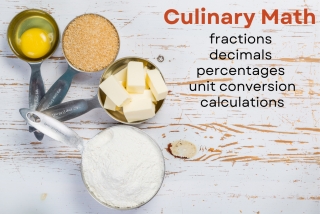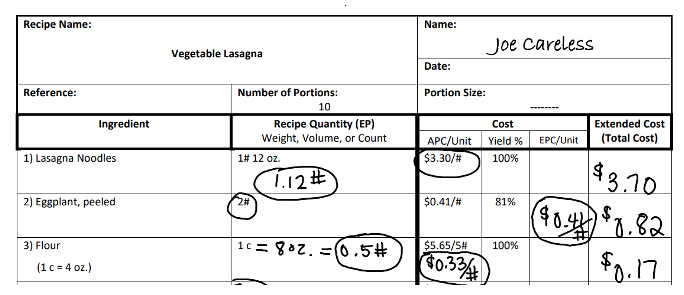
Culinary Math Teaching Series: Joe Careless Food Cost Form
01 May 2023Recipe costing practice has students determining and explaining incorrect answers to deepen their knowledge.
By Linda Blocker, CHE, Associate Professor at the State University of New York at Delhi
Feedback & comments: This email address is being protected from spambots. You need JavaScript enabled to view it.
Once students begin to solidify their understanding of food cost form calculations, it is time to challenge that understanding in an effort to deepen it. We need to help them cross over from students who automatically do math-based steps and follow examples to students who realize their answers make sense and intuitively know something is wrong when they get the wrong answer. Figuring out what is wrong and correcting that error takes learning to the next level.
I developed the Joe Careless Food Cost Form to put students in a different position with recipe costing. Their level of understanding is elevated when students are asked to determine what is wrong with incorrect calculations and explain the error.
Students are given a two-sided food cost form. One side has a vegetable lasagna recipe with Joe Careless’ handwritten calculations shown. The other side is the same food cost form without Joe’s work. The directions for side one are to figure out what is incorrect for each line of the food cost form and explain why it is incorrect. After they complete that analysis, students go on to side two and complete the food cost form correctly.
What I find most impressive about this activity is when the food cost form mistake mirrors a mistake students generally make, they recognize the error and correct it successfully. Sometimes, it is easier to see the error when you aren’t the one making it.

In this section of side one, you can see that the error is in the ingredient quantity for problem one. I don’t know about you, but many of my students simply throw a decimal point between the number of pounds and the number of ounces to “convert” that mixed unit into all pounds. They completely ignore the fact that there are 16 ounces in a pound and plow full steam ahead.
In the second line, the EPC equals the APC even though the yield percentage is 81%. Students should recognize that it doesn’t make sense. The cost of the trim loss must be incorporated into the selling price so money is not lost.
The flour example in the third problem is one of the most common costing mistakes. Even when students understand that not every ingredient weighs eight ounces in a cup, they still default to this fact and incorrectly use it in costing. It is important that they see these errors and explain why they are wrong.
The instructions explain that there is an error in every line of the food cost form. Knowing this sets them up to determine confidently what is wrong with the calculations for each ingredient. Many of them need that hint to help them look at the calculations with a more discerning eye. Explaining why it is wrong is where they solidify their understanding of the correct calculations.
Click here to view the Joe Careless Food Cost Form and answer key. You are welcome to use it. However, I also encourage you to create your own based on the common mistakes your students make. There are many excellent conversations that come from this activity that further enrich your students’ learning.
Lastly, if you like this activity, you should try using it with other concepts. Knowing what is wrong, explaining why it is wrong, and correcting it offers students a pathway to mastery that many of our introductory activities do not.
Next month I will share some best practices when teaching Culinary Math concepts.
